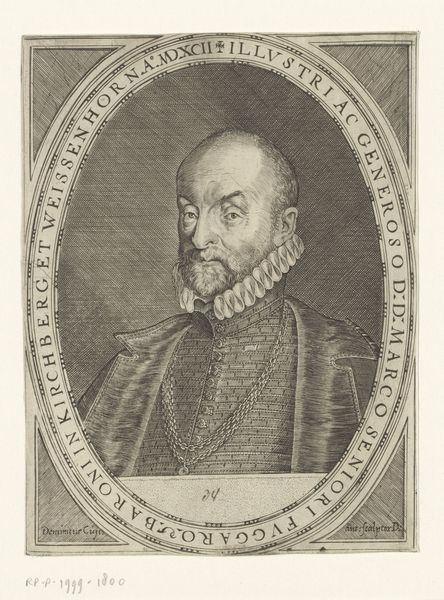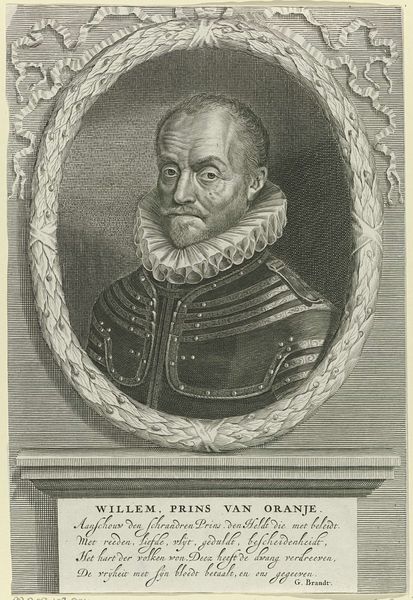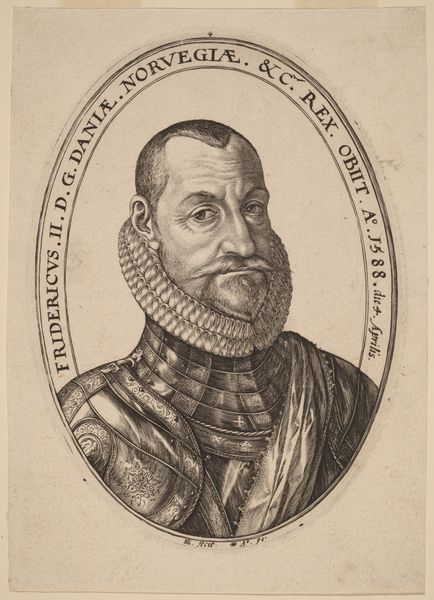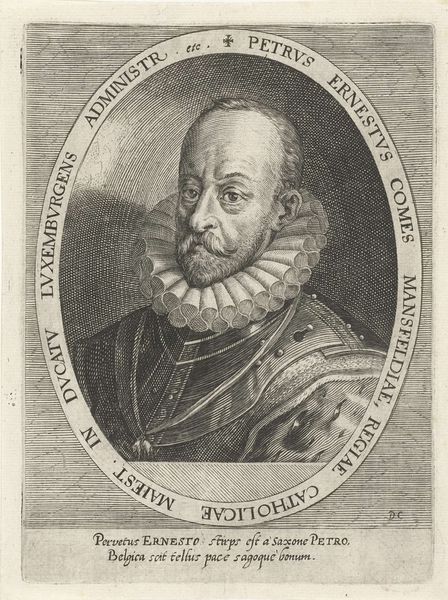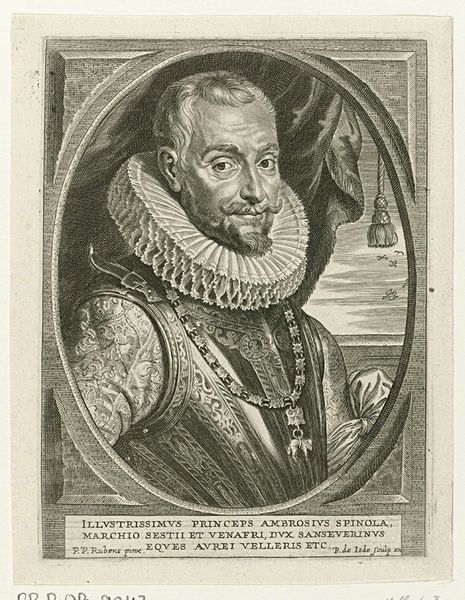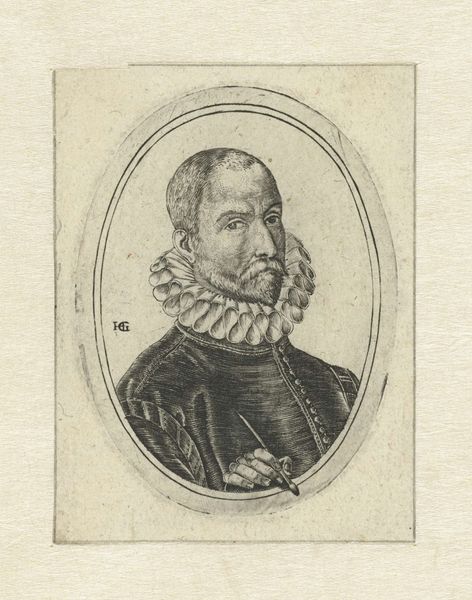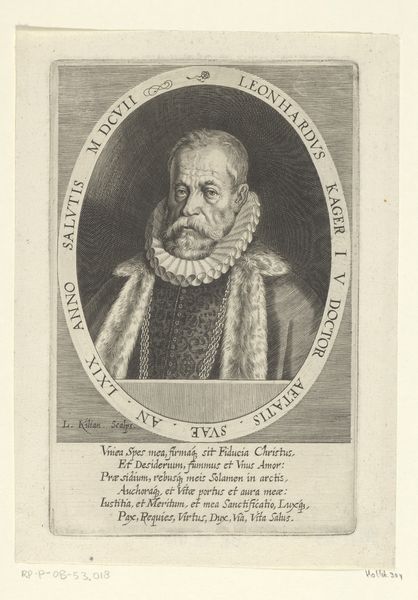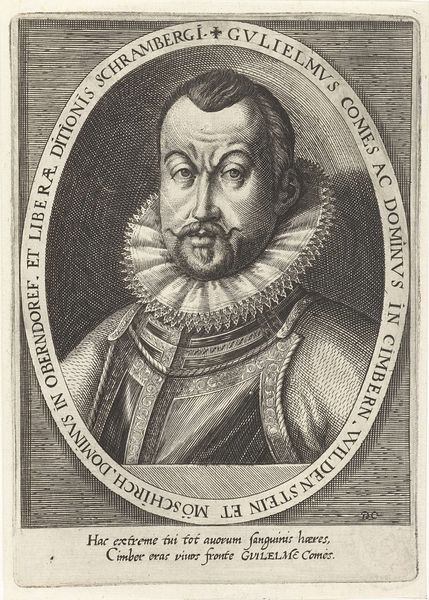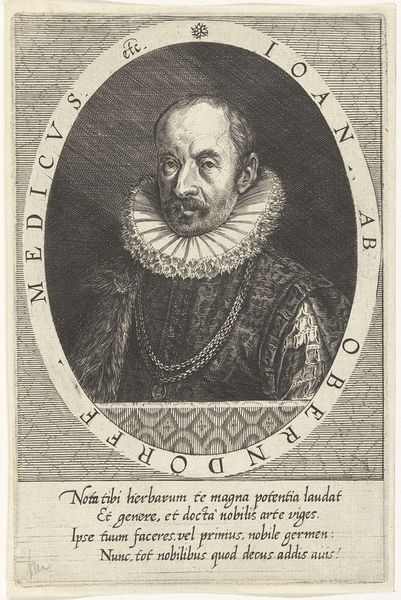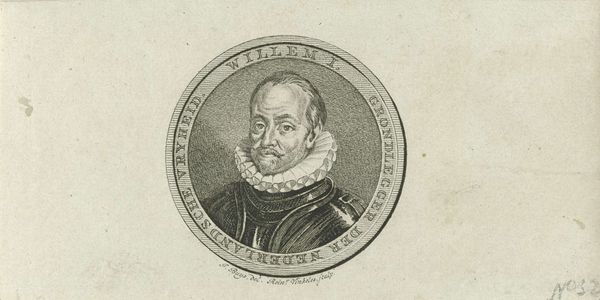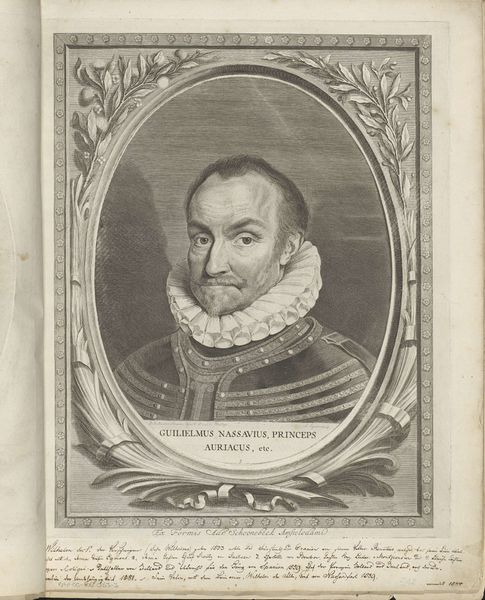
engraving
#
portrait
#
old engraving style
#
mannerism
#
engraving
Dimensions: height 124 mm, width 96 mm
Copyright: Rijks Museum: Open Domain
Editor: Here we have a portrait entitled "Portret van Gillis van Vlierden, op 62-jarige leeftijd", created in 1586 by Wierix. It's an engraving. What immediately strikes me is the formality and gravity of the subject. What do you see in this piece, especially considering its historical context? Art Historian: It's fascinating to consider what an engraving like this communicated in 1586. These portraits were powerful tools in constructing and maintaining social standing. Note how the composition – the rigid pose, the elaborate ruff – served to project authority and respectability. We are clearly looking at someone of importance, are we not? How might the inscription below the image have contributed to that projection of authority? Editor: Right, the ruff is really eye-catching; and yes the inscription... "Consulere quod iustum" something... it feels connected, like a declaration or motto? Art Historian: Precisely! Inscriptions were crucial elements that could further amplify the sitter's identity or virtues, serving almost as an early form of public relations. Do you think the depiction and dissemination of such imagery through prints had a standardizing effect on perceptions of power? Editor: I guess so. If everyone commissioning portraits adopted similar poses and styles, it would reinforce those visual cues as markers of status throughout society, kind of setting a standard look for leaders. That's an interesting thought. Art Historian: It suggests how art actively shaped social perceptions. Beyond aesthetic considerations, this print is an artifact of power relations in 16th-century society, and its impact was not passively received but actively shaped public understanding. Editor: Wow, I never considered engravings as active tools of social construction like that. Thanks for shedding some light! Art Historian: My pleasure! Examining art within its social and historical framework offers a much deeper understanding, one that goes beyond merely appreciating aesthetics.
Comments
No comments
Be the first to comment and join the conversation on the ultimate creative platform.
